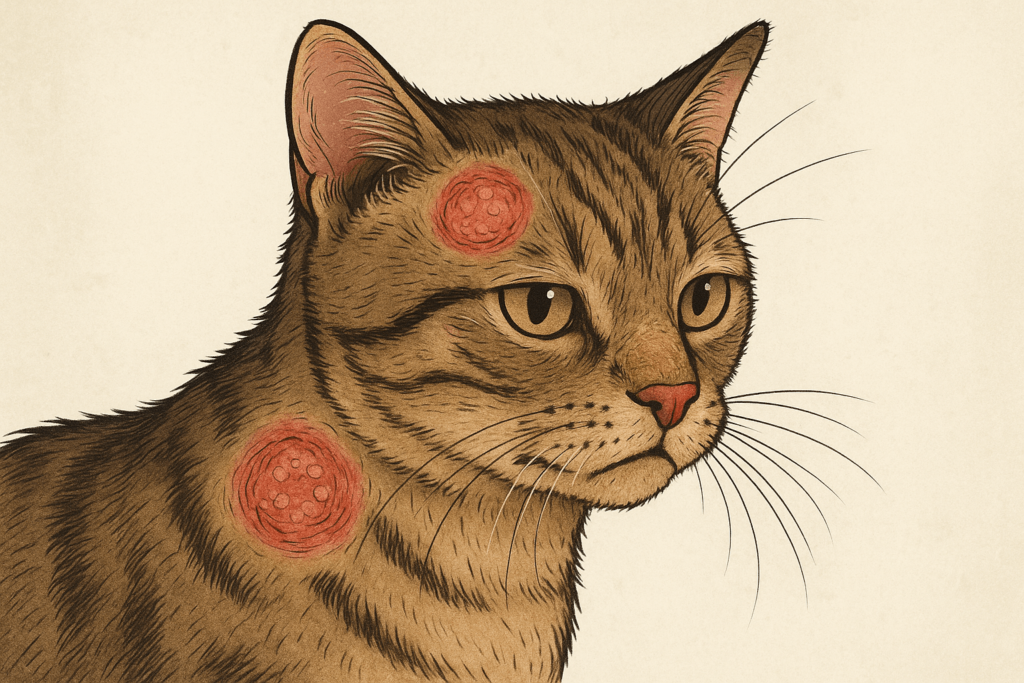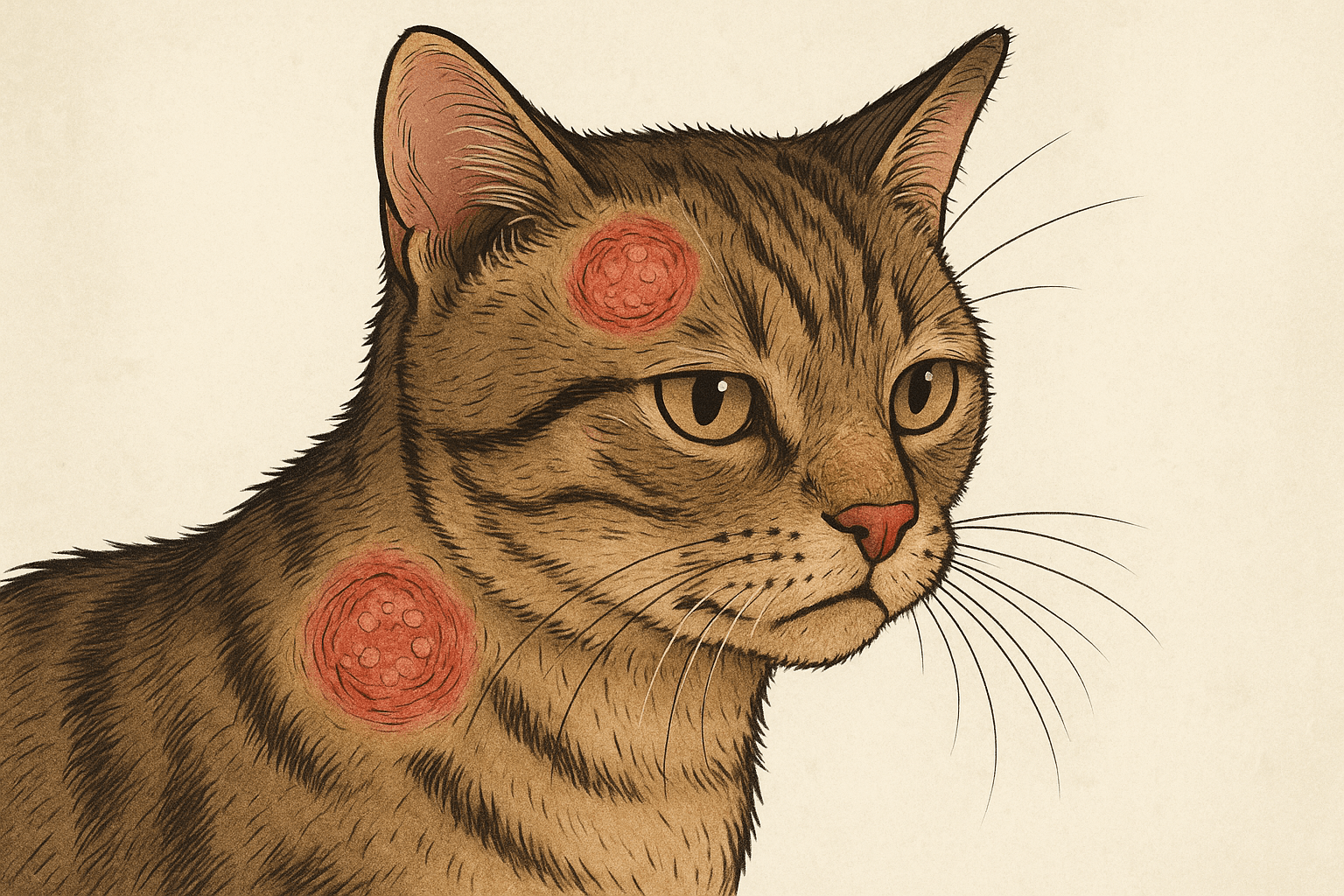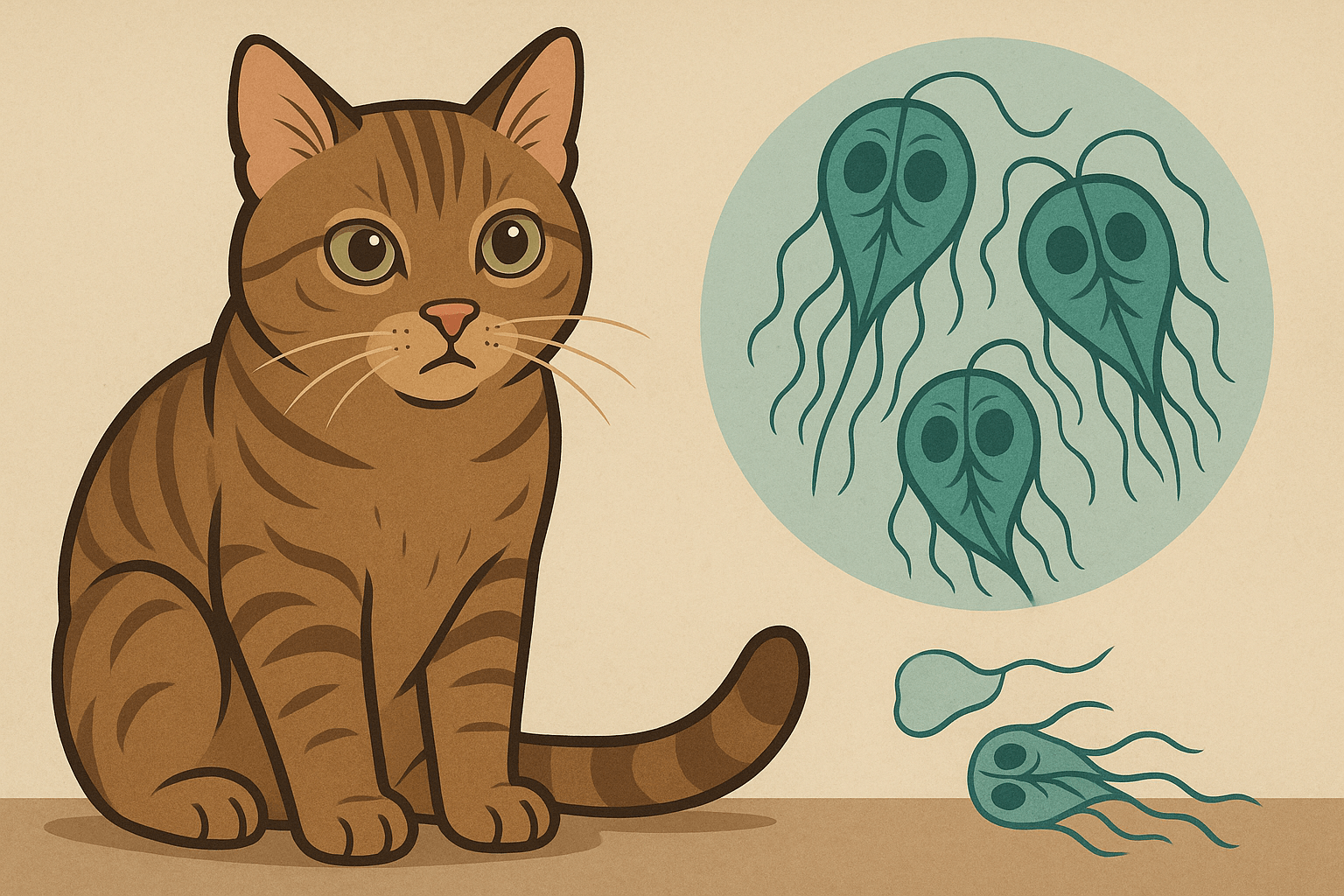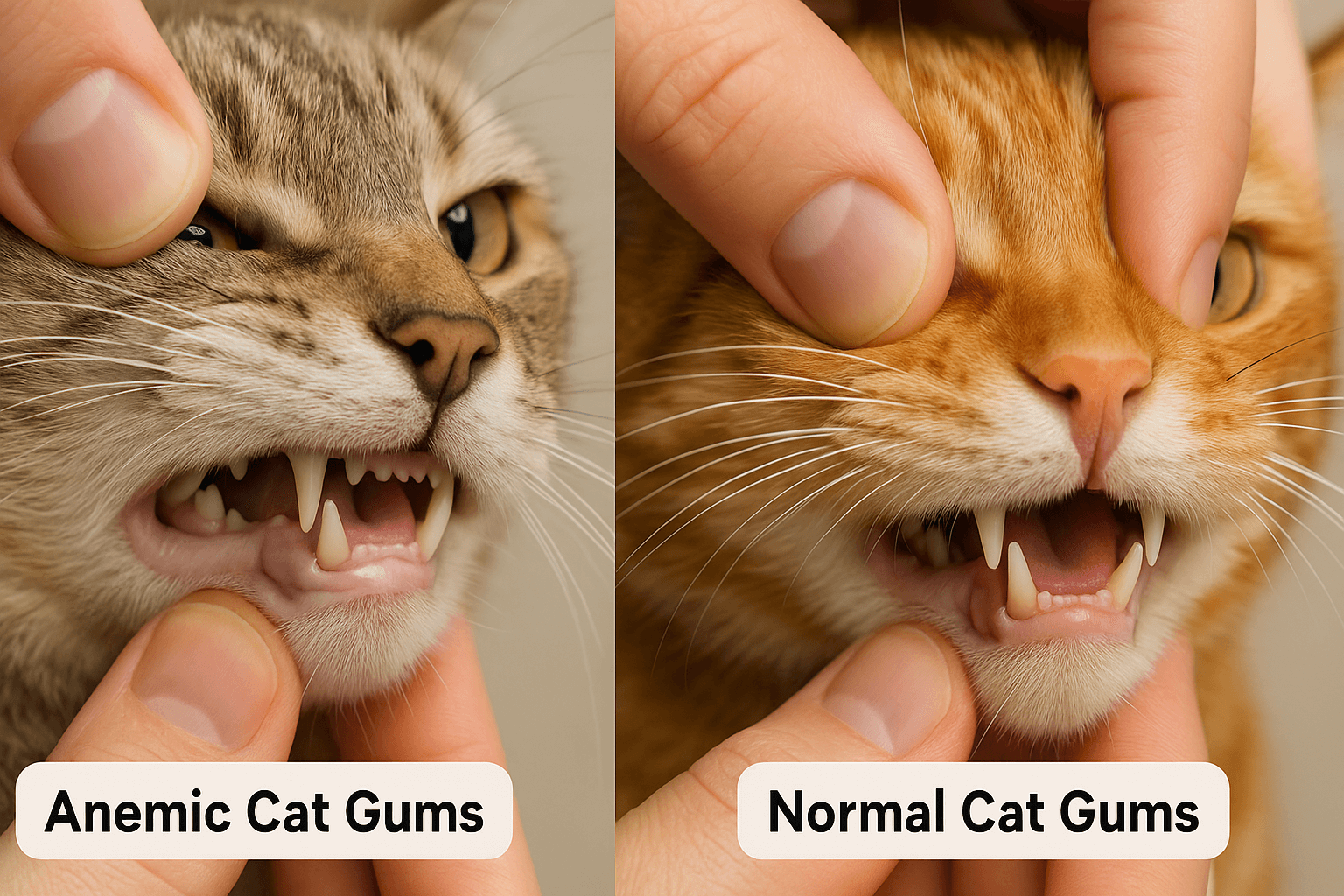Cat Ringworm Symptoms: What Every Pet Owner Should Know
Ringworm is a common yet misunderstood condition that can affect cats of all ages and breeds. Despite its name, ringworm isn’t caused by worms but rather by a fungal infection. This highly contagious condition not only impacts your cat’s health but can also spread to humans and other pets if left untreated. Recognizing the symptoms early is key to preventing its spread and ensuring your feline friend receives prompt care. In this article, we’ll explore the signs of ringworm in cats, how to identify it, and what steps you can take to manage and treat this pesky infection effectively.
Key Symptoms of Cat Ringworm
Identifying ringworm in cats can be challenging, as the symptoms often resemble other skin conditions. However, understanding the most common signs will help you spot the infection early and seek appropriate treatment.
Circular Bald Patches:
One of the hallmark signs of ringworm is circular or irregular patches of hair loss, usually on the head, ears, or paws. These areas may appear scaly or crusty.Red, Scaly Skin:
Infected areas often develop redness and flakiness, resembling dry skin or dandruff. This can be itchy and uncomfortable for your cat.Broken or Brittle Hair:
The fungus weakens the hair shafts, causing them to break easily. You may notice stubby or brittle fur around affected areas.Itchiness and Irritation:
While not all cats scratch excessively, some may experience mild to moderate itching, leading to further irritation or self-inflicted wounds.Darkened or Thickened Skin:
In severe cases, the skin around the infected area may thicken or darken, indicating prolonged fungal activity.
If you notice any of these symptoms, it’s important to consult your veterinarian promptly to confirm the diagnosis and begin treatment.

How Ringworm Spreads in Cats
Understanding how ringworm spreads is crucial for preventing its transmission to other pets and humans. This highly contagious fungal infection thrives in environments where cats interact closely or share resources.
Direct Contact with Infected Animals:
Cats can contract ringworm through direct contact with an infected animal, whether at home, in shelters, or outdoors.Contaminated Objects:
Items like bedding, grooming tools, toys, and food bowls can harbor fungal spores, spreading the infection to healthy cats.Shared Living Spaces:
Multi-cat households are particularly vulnerable, as shared spaces increase the risk of transmission between pets.Weakened Immune Systems:
Kittens, senior cats, and those with compromised immune systems are more susceptible to contracting ringworm due to their reduced ability to fight off infections.Environmental Factors:
Warm, humid environments create ideal conditions for fungal growth, making outbreaks more likely during certain seasons or climates.
By addressing these factors, you can minimize the risk of ringworm spreading and protect both your cat and your household.
Check this guide 👉Ringworm on Cat Paw Pad: Best 7 Expert Tips!
Check this guide 👉Dog Ringworm Medicine: Best 7 Expert Tips!
Check this guide 👉How Do Cats Get Ringworm? Best 7 Expert Tips!
Preventing Ringworm Spread | Treating Ringworm in Cats |
|---|---|
Isolate infected cats from others | Use medicated shampoos prescribed by vets |
Wash bedding and toys regularly | Apply topical antifungal creams |
Disinfect surfaces and shared items | Administer oral antifungal medications |
Maintain a clean, dry environment | Shave affected areas for better treatment access |
Limit exposure to stray or unknown cats | Monitor progress and follow vet guidance |
Diagnosing Ringworm in Cats
Accurately diagnosing ringworm requires veterinary expertise, as the symptoms can mimic other skin conditions. Here’s what to expect during the diagnostic process and why it’s essential for effective treatment.
Wood’s Lamp Examination:
Veterinarians use a special ultraviolet light (Wood’s lamp) to detect fluorescent green areas caused by certain types of ringworm fungi.Fungal Culture Test:
A sample of your cat’s fur or skin is sent to a lab to grow the fungus, confirming the presence of ringworm and identifying the specific strain.Physical Examination:
Your vet will assess visible symptoms, such as hair loss, scaling, and redness, to narrow down potential causes.Microscopic Analysis:
A microscopic examination of hair or skin samples can reveal fungal spores, aiding in diagnosis.Blood Tests (Rarely Needed):
In complex cases, blood tests may be used to rule out underlying health issues contributing to the infection.
A proper diagnosis ensures targeted treatment, reducing recovery time and preventing recurrence.
Home Care Tips for Managing Ringworm
While veterinary treatment is essential, there are several steps you can take at home to support your cat’s recovery and prevent reinfection.
Clean and Disinfect Regularly:
Thoroughly clean your home, focusing on areas where your cat spends time, to eliminate fungal spores.Wash Your Hands After Handling:
Always wash your hands after touching an infected cat to avoid spreading the fungus to yourself or others.Provide Nutritious Food:
Boost your cat’s immune system by ensuring they receive a balanced diet rich in vitamins and minerals.Limit Stressful Situations:
Stress can weaken your cat’s immune response, so provide a calm and comfortable environment during recovery.Follow Treatment Consistently:
Adhere to your vet’s prescribed treatment plan, even if symptoms improve, to ensure complete eradication of the infection.
With proper care and attention, your cat can recover fully and return to their happy, healthy self.
Common Misconceptions About Ringworm
Despite its prevalence, ringworm is surrounded by myths that can lead to confusion among pet owners. Clearing up these misconceptions ensures you approach the condition with accurate knowledge.
Myth: Ringworm Only Affects Outdoor Cats:
Indoor cats are just as susceptible, especially in multi-pet households or if exposed to contaminated objects.Myth: Ringworm Always Causes Severe Symptoms:
Some cats show mild or no symptoms, making it harder to detect without professional testing.Myth: Ringworm Can Be Treated Overnight:
Recovery takes time, and rushing the process can result in incomplete healing or recurrence.Myth: Only Cats Get Ringworm:
Dogs, humans, and other animals can also contract ringworm, emphasizing the importance of prevention.Myth: Vaccines Prevent Ringworm:
There is no vaccine for ringworm; prevention relies on hygiene and early intervention.
Dispelling these myths helps foster a clearer understanding of ringworm and promotes effective management strategies.
Supporting Your Cat’s Immune System
Strengthening your cat’s immune system plays a vital role in fighting off ringworm and preventing future infections. Here are simple ways to boost their natural defenses.
Feed High-Quality Food:
Choose premium cat food formulated with essential nutrients to support skin and coat health.Include Omega-3 Fatty Acids:
Supplements or foods rich in omega-3s can improve skin resilience and reduce inflammation.Ensure Adequate Hydration:
Encourage your cat to drink water by providing fresh sources or wet food to maintain skin moisture.Minimize Environmental Stressors:
Loud noises, overcrowding, or sudden changes can weaken immunity—create a stable, peaceful home.Schedule Regular Vet Check-Ups:
Routine visits help monitor your cat’s overall health and address any underlying issues promptly.
A strong immune system equips your cat to better resist infections like ringworm.
Preventing Ringworm in Multi-Cat Households
Managing ringworm becomes more challenging in homes with multiple cats, but proactive measures can significantly reduce the risk of outbreaks.
Separate Infected Cats Temporarily:
Isolate the affected cat until treatment is complete to prevent spreading the fungus to others.Rotate Toys and Accessories:
Rotate and disinfect shared items like scratching posts and litter boxes frequently.Bathe Cats Separately:
Use separate grooming tools and bathe cats individually to avoid cross-contamination.Monitor All Pets Closely:
Keep an eye on other cats for early signs of ringworm, as they may be asymptomatic carriers.Deep Clean Shared Spaces:
Vacuum carpets, mop floors, and sanitize surfaces regularly to eliminate lingering fungal spores.
With careful planning and consistent effort, you can protect all your feline companions from ringworm outbreaks.
Frequently Asked Questions About Cat Ringworm
Is ringworm dangerous for my cat?
While ringworm isn’t life-threatening, it can cause discomfort and lead to secondary infections if left untreated.
Can humans catch ringworm from cats?
Yes, ringworm is zoonotic, meaning it can spread from cats to humans. Practice good hygiene to reduce the risk.
How long does treatment take?
Treatment typically lasts 6-8 weeks, depending on the severity of the infection and your cat’s response to medication.
Can I use over-the-counter treatments?
It’s best to avoid OTC products unless recommended by your vet, as improper use can worsen the condition.
Will my cat’s fur grow back?
Yes, once the infection clears, your cat’s fur will regrow naturally, though it may take some time.
Taking Action Against Cat Ringworm
Ringworm may be a frustrating and persistent condition, but with early detection and proper care, it’s entirely manageable. By recognizing the symptoms, understanding how it spreads, and following your veterinarian’s guidance, you can help your cat recover quickly and prevent future outbreaks. Remember, maintaining a clean environment and supporting your cat’s overall health are key to keeping this pesky fungal infection at bay. With patience and dedication, you’ll have your feline companion back to their playful, purring self in no time!
Giardia in Cats: Best 7 Expert Tips! Discover expert advice on identifying, treating, and preventing giardia in cats to ensure your feline stays happy and healthy.
Cat Hyperventilating: Best 7 Expert Tips! Discover signs, causes, and solutions for cat hyperventilation. Learn how to calm your cat and when to seek veterinary care for their breathing issues.
Anemic Cat Gums vs Normal: Best 7 Expert Tips! Learn to spot signs of anemia in cats, understand gum health, and ensure your feline stays happy and healthy with expert advice.
Himalayan Cat Size: Best 7 Expert Tips! Discover expert advice on Himalayan cat size, growth factors, care tips, and how to ensure your feline stays healthy and happy.





